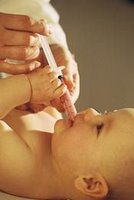- car
- bus
- boat
- train
- airplane
- bicycle (didn't go far!)
1. Bring along the parent or caretaker your toddler is most attached to. Don't think that they don't know or feel anything when their loved one is not around after a while. If you don't heed this advice, be prepared for some far-reaching negative effects after the trip. Children do remember such events and may change their behaviour towards their loved one after they re-unite.
 2. Travel by air before your toddler turns two years old. Most airlines offer 25% to 75% off the adult fare for toddlers less than two years old. However, this also means they will get a seat. You can overcome that by choosing partially-full flights or requesting that the airline seat you at the exit or partition rows. This way, your toddler can get an available seat or have more space to move and rest, respectively.
2. Travel by air before your toddler turns two years old. Most airlines offer 25% to 75% off the adult fare for toddlers less than two years old. However, this also means they will get a seat. You can overcome that by choosing partially-full flights or requesting that the airline seat you at the exit or partition rows. This way, your toddler can get an available seat or have more space to move and rest, respectively.3. Use a lightweight stroller. Get a stroller that weighs no more than your toddler and one that can recline so that he/she can nap on the go. It can be hand-carried into the airplane cabin. If you're heading to places with temperate climate, don't forget to bring a portable fan with soft blades!
4. Pack light snacks and lots of water. Young ones tend to get bored much quicker when they are confined to a seat. Calm your toddler by providing snacks like plain biscuits. Water is vital as they, like the rest of us, dehydrate more when travelling. It is also a good way to clear the ears during altitude changes, like in an airplane.
5. Pray for your toddler's safety and blessing and tell him/her that he/she is going on a trip. You've done all the preparation and precaution you can ever think of, now leave the rest to your Higher Being. Even though they are young and may not have started talking, it's good to tell them what is going on and they may recall the trip when they grow bigger.
Technorati Tags: tips, travel tip, toddler travel






